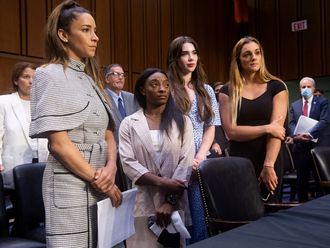
NEW YORK: Once or twice a week, on his lunch break, Eric Dobesh walks half a city block for a nap in a single-occupancy pod. Behind a thick black curtain, Dobesh dims the twinkling “stars” on the pod’s black ceiling and sleeps until a restaurant pager buzzes to signify the session’s end.
On the walk back to work, he picks up a salad. He eats lunch at his desk.
“I don’t drink coffee, so I basically get by on willpower, food and naps,” said Dobesh, 26, who lives in Sunnyside, Queens. Over the past few weeks, he has been regularly dozing off at Nap York, in Midtown Manhattan that calls itself a “wellness club.”
Nap York and comparable venues, where people pay to rest or sleep, are expressions of a “culture shift” — evidence of people recognising “that this is a much more efficient way to recharge than having a double espresso in the afternoon, or three cinnamon buns to get the sugar rush,” said Arianna Huffington, founder of the wellness site Thrive Global and HuffPost.
Refresh and recharge
At Thrive Global’s headquarters in SoHo, there is a nap room for employees. Huffington predicts that “recharging rooms” will be “as common as board rooms” within the next few years because society is recognising the importance of getting good sleep.
“People don’t really need convincing anymore,” said Huffington. “The conversation has moved from convincing people that it’s important to actually helping them introduce micro steps in their lives, like not sleeping with their phones by their bed.”
At the New York Police Department’s Midtown South station house, Nap York recently created a bunk bed nap pod for the detective squad, said Stacy Veloric, the head of marketing for the company. At Google’s New York offices, nap pods are scattered throughout, a spokeswoman said. And at WeWork’s Manhattan headquarters, there is a room dedicated to “wellness” and “quiet,” though not specifically to napping. Most workplaces, however, have yet to incorporate sleep zones into their floor plans.
After a recent visit to Nap York, Jeva Lange, 25, a writer said that she felt silly paying for a nap, but understood the appeal of the idea. “It seems like such a hard thing to justify,” she said, “but at the same time, I really appreciated having an hour and a half to give myself permission to do nothing.”
“On paper, it sounds like something frivolous,” said Cathy de la Cruz, 37, of paying to sleep at a spa. “It’s like buying bottled water.”
De la Cruz has been taking 30-minute naps at Yelo Spa a couple of times a year for several years. “It seems like something ridiculous to pay for to a lot of people because they know they can do it for free, or they can manage their lives differently in a way where they just don’t need to take a nap,” de la Cruz said. “That’s not me at this point.”
How do you view sleep?
The way a society views sleep is socially constructed, said Natalie D. Dautovich, Ph.D., an assistant professor in the psychology department at Virginia Commonwealth University and an environmental scholar for the National Sleep Foundation.
“Cultural perceptions of napping can range from laziness to viewing napping as a beneficial, typical, daily activity,” she said.
“In the United States, we are only beginning to understand that sleep is a critical aspect of a healthy and productive lifestyle,” she said. “Rather than viewing sleep as ‘lost time’ away from work and socialising, we are beginning to recognise that prioritising sleep is necessary to achieve optimal productivity and well-being.”
How do you view sleep?
The way a society views sleep is socially constructed, said Natalie D. Dautovich, Ph.D., an assistant professor in the psychology department at Virginia Commonwealth University and an environmental scholar for the National Sleep Foundation.
“Cultural perceptions of napping can range from laziness to viewing napping as a beneficial, typical, daily activity,” she said. “In the US, we are only beginning to understand that sleep is a critical aspect of a healthy and productive lifestyle,” she said. “Rather than viewing sleep as ‘lost time’ away from work or socialising, we are starting to recognise that prioritising sleep is necessary for optimal productivity and well-being.”
Beet shots, plants and quick naps
At Yelo Spa, in Midtown East, nappers pay a dollar a minute. Inside, a bold aesthetic — walls of magenta and orange, and furniture to match - juxtaposes a menu of treatments meant to soothe. Clients can book facials and massages with sleep sessions tacked on at the end. Or they can just book a nap.
There is one nap “cabin,” a room meant specifically for sleeping despite its thin walls, but clients can nap in any of the treatment rooms. Clients choose a soundtrack — Polynesian, classical, ocean waves — and have the option to select an aromatherapy mist. Each room is equipped with a zero-gravity bed that adjusts to minimize pressure on the body. Sleep can come more quickly when one’s legs are above heart level, according to Yelo staff members.
“What’s funny about it is, it’s like, the most old-fashioned thing in the world,” de la Cruz said of nap therapy. “It’s sleeping in a bed; but somehow it feels like the future.”
At Nap York, which occupies a four-story building south of Times Square, a block of seven pods resembles a futuristic charging station on the second floor. A housekeeper cleans the vegan-leather-covered mattress and replaces the white pillowcase in each pod almost immediately after use. Either security guards or cameras are stationed on each floor.
On the first floor, clients can use an iPad to order beet shots, salads and sandwiches, which arrive on a conveyor belt set against a wall of live plants. The third floor offers egg-shaped “moon chairs” and a space for yoga classes, and on the fourth floor there are desks with chairs that fully recline for those who want to work and rest.
“Each floor is nappable,” Veloric said. “You forget that you’re on 36th and 7th.” Veloric pointed out the hundreds of live plants in the building before demonstrating a relaxed pose in a zero-gravity chair herself, her eyelids fluttering shut. “You feel like you’re in the middle of the forest, surrounded by nature.”












